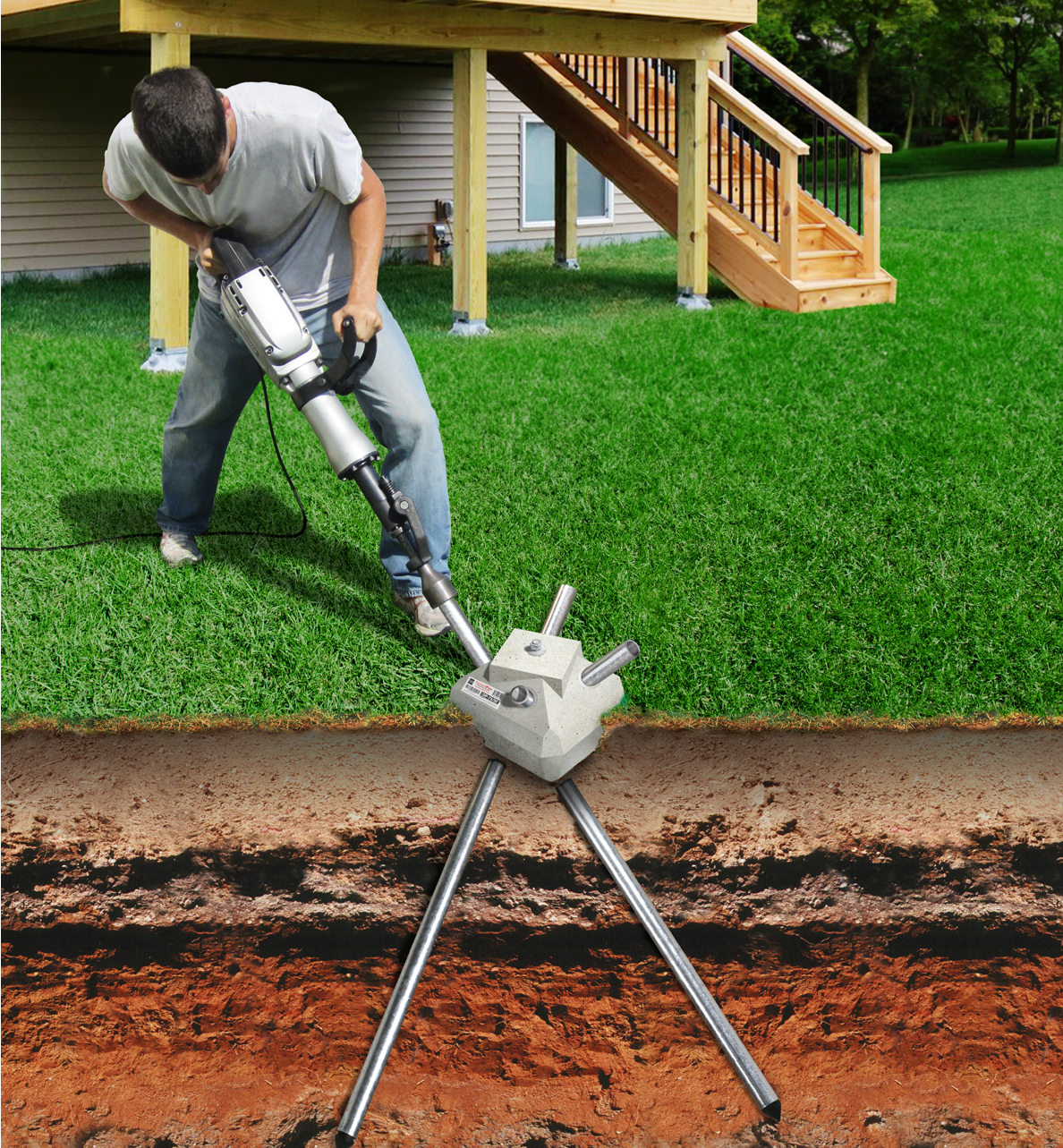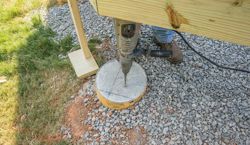Deck Footings Unveiled: Recognizing the Secret Components of a Dependable Deck Framework
Wiki Article
Selecting the Right Deck Footings for Stability and Sturdiness
The longevity and safety of your deck depend greatly on the kind of footings you select, as they provide the essential assistance and stability to hold up against the examination of time. In this discussion, we will check out the various types of deck grounds, think about the essential aspects to weigh when making a decision, and dig into the pros and cons of various choices.Sorts Of Deck Footings
There are several types of deck footings that can be made use of, each offering special advantages and factors to consider. One usual kind of footing is the concrete pier ground. These grounds include a round opening loaded with concrete, which supplies a solid structure for the deck blog posts. Concrete pier grounds are fairly easy to mount and supply excellent security, making them a popular choice for lots of deck projects.These grounds are set up by screwing them right into the ground, which creates a secure foundation for the deck. They additionally enable for simple adjustment and progressing of the deck if needed.
Alternatively, some builders select precast concrete footings. These grounds are constructed from resilient concrete and come in numerous sizes and shapes to suit different deck layouts. Precast concrete grounds are convenient to install and give a steady base for the deck structure.
Ultimately, one more option is the post-in-anchor ground system. This kind of footing entails driving a metal support into the ground and affixing it to the deck message. It supplies versatility in regards to positioning the deck messages and is suitable for decks with lightweight structures.
When picking the appropriate kind of deck footing, it is vital to consider factors such as dirt problems, deck lots, and regional building regulations (Deck Footings). Consulting with a professional service provider or architectural engineer can help ensure the suitable footing is selected for a secure and secure deck
Aspects to Consider When Picking Footings
When selecting the appropriate footings for a deck, it is crucial to carefully think about different variables such as soil conditions, deck tons, and adherence to neighborhood building regulations. These factors play a considerable duty in making certain the stability and toughness of the deck framework.The type of soil on which the deck will certainly be constructed determines the type of grounds needed. On the various other hand, decks developed on clay or extensive soils might call for grounds that can fit the soil's tendency to increase and agreement.
One more essential factor is the deck lots. The weight of the deck, consisting of the products utilized and any possible online loads such as furniture or celebrations, need to be taken right into account when picking footings. The footings have to be created to bear the weight of the deck and distribute it equally to prevent any kind of architectural problems or failings.
Finally, adherence to regional building ordinance is vital. Building ordinance differ from region to region, and it is important to abide with the particular requirements established by the neighborhood authorities. Deck Footings. These codes ensure that the deck is built safely and meets the necessary standards for structural stability and load-bearing ability
Concrete Grounds: Cons and pros

Concrete footings supply a number of advantages and disadvantages when made use of as the foundation for a deck. On the positive side, concrete footings provide excellent stability and resilience.
One more advantage of concrete footings is their convenience. They can be poured into various sizes and shapes to fit different deck layouts and configurations. Concrete footings can be personalized to fit the particular demands and needs of the deck framework.
However, there are additionally some drawbacks to making use of concrete grounds. One significant negative aspect is the price and labor entailed in their installment. Concrete grounds need excavation and usually require the aid of hefty machinery. This can increase the total price of the deck project and may require expert aid.

Helical Piers Vs. Sonotubes: Which Is Better?
In thinking about the foundation options for a deck, the comparison between helical piers and sonotubes is important in figuring out the remarkable selection. They are turned right into the ground making use of hydraulic equipment, giving a long lasting and steady foundation for the deck.The helical plates on the piers produce a strong grip with the dirt, protecting against any kind of movement Website or changing of the deck. Sonotubes, on the other hand, rely exclusively on the concrete filling for stability, which might not supply the exact same level of toughness and resistance.
In terms of installment, helical piers are reasonably much easier and faster to install contrasted to sonotubes. The hydraulic equipment utilized to turn the piers into the ground makes certain a reliable and quick procedure. Sonotubes, on the various other hand, require excavating openings and pouring concrete, which can be labor-intensive and time-consuming.
Furthermore, helical piers are an even more versatile choice. They can be made use of in different dirt conditions and can be changed or reinforced if needed. Sonotubes, on the other hand, may require added support, such as rebar, in specific dirt problems or areas with high tons needs.
Selecting the Right Footings for Your Deck's Dimensions
For ideal architectural honesty, it is vital to very carefully pick the ideal footings that line up with the measurements of your deck. The dimensions of your deck, including its size, length, and elevation, play a considerable duty in identifying the type and size of footings required.When selecting grounds for your deck, it is necessary to consider the load-bearing capacity of the soil. The weight of the deck, combined with the weight of any furniture or people on it, exerts a substantial pressure on the grounds (Deck Footings). It is essential to choose footings that can adequately sustain this weight without sinking or changing over time.
Larger decks with better dimensions call for larger grounds to supply adequate security and support. The form of the footings, whether they are square or rounded, depends on the style and layout of the deck.
Verdict
To conclude, choosing the right deck grounds is crucial for making certain security and durability. website link Variables such as the kind of footings, the deck's dimensions, and the advantages and disadvantages of different options need to be taken into consideration. Concrete footings provide strength and long life, however may be extra time-consuming and pricey to install. Helical piers and sonotubes have their own benefits and disadvantages. Eventually, picking the suitable grounds for your deck's specific demands is important for a resilient and effective structure.These footings consist of a round opening filled with concrete, which supplies a strong structure for the deck blog posts. Concrete pier grounds are reasonably easy to install and provide exceptional security, making them a preferred selection for many deck jobs.
Precast concrete footings are practical to mount and provide a stable base for the deck structure.
It uses flexibility in terms of positioning the deck articles and is appropriate for decks with light-weight structures.
Concrete grounds supply several benefits and disadvantages when made use of as the structure for a deck.
Report this wiki page